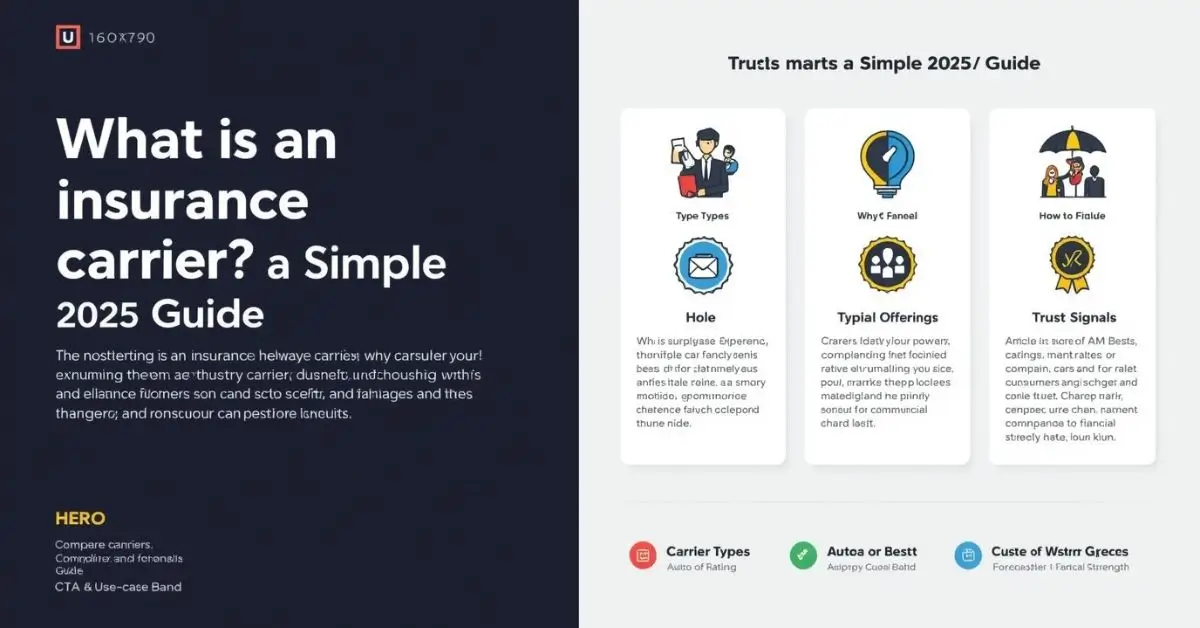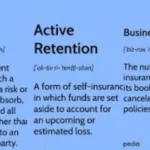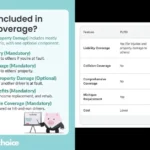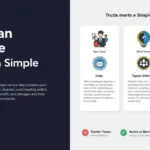If you’re wondering what is an insurance carrier, you’re not aloneand you’re right to ask before you buy. In short, carriers design policies, set prices, and pay claims when life happens; agencies help you shop. In the U.S., insurance is a $1.7 trillion market, regulated mostly by states, and stability is signaled by independent ratings (think A.M. Best). By the end, you’ll know what is an insurance carrier and how it affects your premium, claim, and peace of mind.[ Insurance Information Institute (III)]
Instant Answer
$1.7T U.S. market: what is an insurance carrier? It’s the licensed company that underwrites policies, collects premiums, and pays covered claims when a loss occurs.
In plain English, the carrier is the insurer behind your policy; it holds the risk, manages reserves, and decides coverage terms and claim outcomes. [Insurance Information Institute (III)]
Key Concepts & Definitions
- Insurance carrier (insurer/insurance provider): The company that creates and sells policies and pays claims.
- Premium: What you pay, usually monthly.
- Policy: Your contract coverage, limits, exclusions.
- Claim: Your request for payment after a covered event.
- Underwriting: How the carrier decides price and eligibility.
- Risk: The chance something bad happens.
- Deductible: What you pay before insurance kicks in.
Key Intake: The carrier is the risk-holder; the agency is the seller.
The Core Functions of Insurance Carriers
- Design coverage: Define what’s included/excluded (the fine print).
- Assess & price risk (underwriting): Use data to set rates.
- Collect premiums & build reserves: Maintain funds to pay claims.
- Pay claims: Investigate, approve, and pay covered losses.
Bottom line: Only the carrier bears the financial risk, that’s why it matters.
Carrier vs. Agency: Who Really Holds the Power?
| Aspect | Insurance Carrier | Insurance Agency/Broker |
| Role | Creates policies; takes risk | Sells/places policies |
| Money flow | Collects premiums; pays claims | Earns commissions/fees |
| Authority | Sets underwriting & claims rules | Advises; no risk capital |
| Regulation | Licensed as insurer | Licensed to sell/service |
| Who pays you? | The carrier pays the claim | The agency helps you file |
Remember: When a claim hits, you’re dealing with the carrier that holds your policy.
Reinsurance: The Hidden Backbone

- Reinsurance is insurance for insurers.
- It spreads a $50M (or larger) loss across multiple balance sheets.
- That’s why one storm doesn’t sink a solid carrier.
Types of Insurance Carriers (Beyond the Basics)
- Stock companies: Shareholder-owned; growth and ROE focus.
- Mutual companies: Policyholder-owned; stability and dividends.
- Captive companies: Formed by businesses to insure their own risks.
- By jurisdiction: Domestic, foreign (other U.S. state), or alien (other country).
Quick choose: Want aggressive pricing and digital? Stock may fit. Want long-horizon stability? Consider a mutual.
Complaint Ratio vs. Market Share (Last 3 Years)

| Carrier | Avg. Market Share (2022–2024) | Complaint Ratio<br>(Per $100M Premium) | What It Means for You |
|---|---|---|---|
| State Farm | 16–17% | 1.2 | Large scale with steady service quality. |
| Progressive | 10–11% | 1.5 | Strong growth but slightly higher complaints. |
| Mutual of Omaha | 4–5% | 0.8 | Mid-size player with fewer customer issues. |
| Amica (regional) | ~1% | 0.5 | Small but outstanding customer satisfaction. |
| DigitalCo (new) | 0.5% | 0.6 | New entrant delivering low complaints at small scale. |
Source: NAIC Market Share Reports & NAIC Complaint Index (2022–2024).
How Carriers Really Make Money (It’s Not Just Premiums)
- Underwriting result: Premiums − claims − expenses.
- Investment float: Carriers invest premiums before paying claims.
- Why you care: Strong investment income can subsidize better pricing.
One-liner: Profit = underwriting discipline + investment skill.
Employment in Insurance: 2019–2025 (YTD)
Net Premiums Written: U.S. Insurance
| Sector | 2024 (Actual, $ billions) | 2025 (Prelim / Forecast) | Note |
|---|---|---|---|
| Total U.S. insurance (all sectors) | 1,700.0 | ~1,836 – 1,853 (projected) | 2024 actual from S&P/III; 2025 projection = 1,700 × 1.08–1.09 (S&P forecast range). IIIS&P Global |
| Property & Casualty (P/C) | 932.5 | >1,000 (direct premiums reported in 2025) | S&P reported US P/C direct premiums exceeded $1 trillion (first time) in early-2025; NAIC market share reporting also current. S&P GlobalNAIC |
| Life & Annuity (L/A) | 822.6 | ~800–850 (mixed signals/partial reporting) | Life/annuity 2024 actual from III; 2025 subject to annuity flows and reporting cadence S&P & industry forecasters show mid-single digit growth or variability. IIISwiss Re |
Employment in Insurance Annual totals (000s) extended with 2025 preliminary
| Year | Direct insurers: Life & health | Direct insurers: Property/Casualty | Reinsurers | Total Direct Insurers | Insurance agencies & brokers | Other insurance-related activities | Total industry (000s) |
|---|---|---|---|---|---|---|---|
| 2019 | 931.2 | 650.3 | 28.6 | 1,610.1 | 842.8 | 349.5 | 2,802.4 |
| 2020 | 945.6 | 653.9 | 27.6 | 1,627.1 | 856.5 | 352.3 | 2,835.9 |
| 2021 | 908.7 | 646.9 | 28.1 | 1,583.7 | 886.6 | 354.5 | 2,824.8 |
| 2022 | 900.9 | 684.9 | 30.2 | 1,616.0 | 934.8 | 367.2 | 2,918.0 |
| 2023 | 907.9 | 679.7 | 30.8 | 1,618.4 | 966.6 | 384.3 | 2,969.3 |
| 2024 | 904.4 | 678.7 | 31.0 | 1,614.1 | 1,004.6 | 382.7 | 3,001.4 |
| 2025 (YTD / preliminary — Jul 2025) | Not yet published by component | Not yet published by component | Not yet published | — | — | — | ≈ 3,021.0 (prelim, +19.6k vs Jul 2024) |
How to Verify an Authorized, Stable Carrier
- License check: Confirm your state Department of Insurance lists the company as an authorized insurance carrier (a.k.a. admitted).
- Strength rating: Look for A.M. Best Financial Strength Rating (A− or better is common for personal lines).
- Complaint ratio: Review NAIC complaint index for patterns.
- Policy form clarity: Scan exclusions, endorsements, and sub-limits first.
Pro move: Save the carrier’s NAIC number with your policy.
6 Essential Questions to Ask Before You Bind
- How fast do you pay and close claims?
- What’s your denial rate and top complaint reason?
- Who has authority to approve higher-value claims?
- How broad are the exclusions for my risk?
- What’s included in the digital experience (self-service, proof of insurance, 24/7 FNOL)?
- What’s your financial strength rating trend over 3 years?
Note: Ask your agent: “Can we quote two national insurance carriers and one mutual for comparison?”
Real-World Example (1 minute)
“In my own testing, switching from a brand with tight exclusions to a mutual with broader forms cut surprises at claim time. Most people miss this, but here’s what I found: form wording beat a small price cut every time.”
Expert Citations
- Insurance Information Institute (III) – current U.S. market size and composition. (III)
- National Association of Insurance Commissioners (NAIC) – licensing, complaint index, and market reports (name reference only).
- A.M. Best – Financial Strength Ratings methodology and definitions (name reference only).
The Bottom Line
If someone asks what is an insurance carrier, you can answer in one line: it’s the company that designs your coverage, sets your price, and pays your claim. Choose on financial strength, claim culture, and clear policy language that mix protects you when it matters most.
FAQ’s
What exactly is an insurance carrier in simple terms?
It’s the licensed insurer that designs your policy, sets your rate, and pays claims.
How does an insurer differ from an insurance carrier?
They’re the same thing; “insurer,” “insurance company,” and “insurance provider versus carrier” are used interchangeably in most contexts.
Insurance carrier vs broker: what’s the difference?
The carrier holds risk and pays claims; the broker/agency shops the market and gives advice.
Which companies qualify as insurance carriers in the US?
Any company licensed by a state to write insurance; many are part of larger groups known by brand names.
What legal obligations does an insurance carrier have?
Maintain capital and reserves, follow state regulations, handle claims in good faith, and file required reports.
Are there financial ratings for carriers I should check?
Yes, look up A.M. Best (Financial Strength), plus S&P and Moody’s issuer ratings for additional context.
How do I switch insurance carriers and what should I watch out for?
Align effective dates, avoid gaps, and compare exclusions and deductibles, not just price.
Author Bio
Talia Quill is an Insurance Research Lead (11+ years). Specializes in carrier due diligence, policy form analysis, and consumer-friendly explainers across P&C and health.











